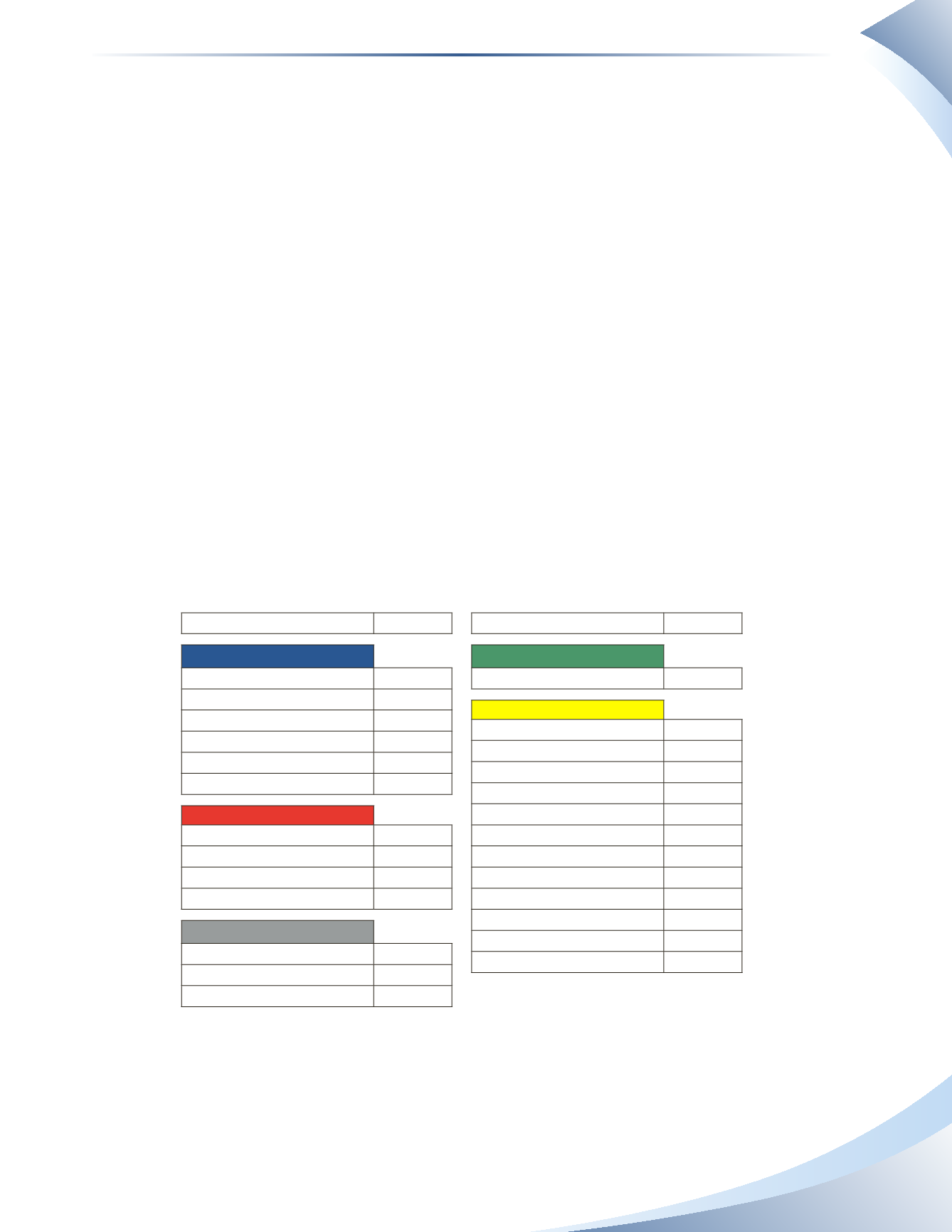
Chapter 4
The Accounting Cycle: Journals and Ledgers
87
It is important to assign account numbers in a logical manner and to follow specific industry stan-
dards. One example of a numbering system is
Account Numbering
100–199:
Asset
accounts
200–299:
Liability
accounts
300–399:
Equity
accounts
400–499:
Revenue
accounts
500–599:
Expense
accounts
Separating each account by several numbers will allow new accounts to be added while maintain-
ing the same logical order. Note that the account numbering follows the order of the financial
statements: balance sheet (assets, liabilities and equity); income statement (revenue and expenses).
Different types of businesses utilize different types of accounts. For example, a manufacturing busi-
ness will require various accounts for reporting manufacturing costs. A retail business, however, will
have accounts for the purchase of inventory.
Figure 4.8 shows how a service company may set up its accounts. Some of the accounts listed here
will be introduced in later chapters. Other accounts can be set up as needed. For example, if the
business has more than one bank account, the chart of accounts would include an account for each
bank account.
Account Description
Account #
ASSETS
Cash
101
Accounts Receivable
105
Prepaid Insurance
110
Office Supplies
115
Equipment
120
Accumulated Depreciation
125
LIABILITIES
Accounts Payable
200
Interest Payable
205
Unearned Revenue
210
Bank Loan
215
OWNER’S EQUITY
Owner’s Capital
300
Owner’s Drawings
310
Income Summary
315
Account Description
Account #
REVENUE
Service Revenue
400
EXPENSES
Advertising Expense
500
Bad Debt Expense
505
Depreciation Expense
510
Insurance Expense
515
Interest Expense
520
Maintenance Expense
525
Office Supplies Expense
530
Professional Fees Expense
535
Rent Expense
540
Salaries Expense
545
Telephone Expense
550
Travel Expense
555
________________
figure 4.8
Each of the accounts listed above will have its own ledger account. Think of the ledger as an ex-
panded T-account. In Figure 4.9, notice the red “T” under the debit and credit columns. This is
shown to illustrate its similarity to the T-accounts you have been working with.


